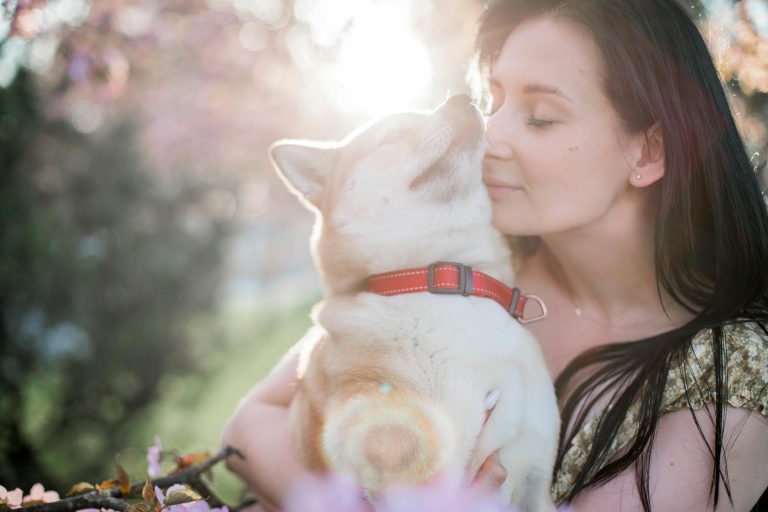Why do dogs stare at you?
Introduction: Why do dogs stare at you?
Dogs, our furry companions, have an extraordinary way of communicating without uttering a single word. One intriguing behavior that often captures our attention is their tendency to stare at us. In this article, we will delve into the reasons behind this curious canine gaze, exploring the various factors that contribute to this behavior.

The Connection Between Dogs and Humans
Bonding Through Eye Contact
The gaze of a dog can go beyond a simple stare; it’s a powerful tool for bonding. Research indicates that mutual eye contact between dogs and humans releases oxytocin, the “love hormone,” promoting a stronger connection.
Communication Beyond Words
Dogs have limited verbal communication, relying heavily on body language. Staring is their way of expressing emotions, needs, and understanding the world around them. It serves as an unspoken language that deepens the bond between them and their human companions.
Curiosity and Observation
Inquisitive Nature of Dogs
Dogs are naturally curious beings. Staring allows them to observe their surroundings, understand human behavior, and learn from their environment. It’s a manifestation of their inquisitive nature.
Learning Through Staring
Puppies, especially, use staring as a tool for learning. By observing their owners and the world around them, they acquire valuable information that aids in their cognitive development.
Seeking Attention and Affection
Emotional Connection
Staring can be a way for dogs to seek attention and affection. It’s a means of expressing their emotions and reinforcing the emotional bond they share with their owners.
Ways Dogs Express Love
In addition to physical gestures, dogs often express their love through prolonged eye contact. This behavior is particularly common in breeds known for their loyalty and affectionate nature.
Canine Body Language
Decoding Dog Expressions
Understanding the nuances of canine body language is crucial for comprehending why dogs stare. Different types of stares convey distinct messages, ranging from excitement and curiosity to anxiety or discomfort.
Understanding Different Stares
A soft, relaxed gaze usually signifies contentment, while a fixed or intense stare may indicate alertness or a desire for interaction. Recognizing these cues enhances the human-dog communication dynamic.
Cultural and Evolutionary Perspectives
Historical Significance
Throughout history, various cultures have ascribed different meanings to dog staring. Some see it as a positive sign, symbolizing protection or spiritual connection, while others associate it with superstitions.
Cultural Interpretations of Dog Staring
Cultural backgrounds can influence our perceptions of dog behavior. Exploring these interpretations provides insight into the diverse ways people view the relationship between humans and dogs.

Behavioral Issues and Solutions
Anxiety-related Staring
Excessive staring, especially accompanied by signs of anxiety, may indicate underlying behavioral issues. Identifying and addressing these concerns is crucial for the well-being of the dog.
Addressing Unwanted Staring Behavior
Training techniques, such as positive reinforcement and redirection, play a vital role in modifying unwanted staring behavior. Consistency and patience are key factors in successfully addressing such issues.
Health Concerns
Medical Reasons for Prolonged Staring
Sometimes, prolonged staring can be attributed to underlying health issues. Consulting a veterinarian is essential to rule out any medical conditions causing discomfort or distress in the dog.
Consulting a Veterinarian
If staring is accompanied by unusual behavior or health symptoms, seeking professional advice ensures a comprehensive understanding of the dog’s well-being.
Training Techniques
Positive Reinforcement
Positive reinforcement techniques, such as rewarding desired behavior, can be highly effective in encouraging positive interactions and reducing unwanted staring.
Redirecting Staring Behavior
Redirecting a dog’s attention through toys, activities, or training commands helps shift their focus away from prolonged staring, promoting healthier behavior.
Staring in Different Breeds
Variations in Staring Habits
Different dog breeds exhibit unique staring habits influenced by their instincts, history, and specific traits. Understanding these variations contributes to a more enriched relationship with our canine friends.
Breed-Specific Traits
Certain breeds are known for their intense gaze, while others may use eye contact more sparingly. Recognizing these breed-specific traits enhances our comprehension of their communication styles.
The Science Behind Staring
Neurological Aspects
Exploring the neurological aspects of dog behavior sheds light on the brain mechanisms involved in staring. Understanding the science behind it adds a layer of appreciation for the complexity of the canine mind.
Hormonal Influences on Dog Behavior
Hormones play a significant role in shaping dog behavior. Examining the hormonal influences on staring behavior contributes to a more holistic understanding of the factors at play.
Do Dogs Understand Human Emotions?
Emotional Intelligence in Dogs
Research suggests that dogs possess a level of emotional intelligence, enabling them to comprehend human emotions. The ability to understand and respond to our feelings further strengthens the emotional connection.
Empathy and Connection
Dogs have an innate ability to empathize with human emotions. Their staring may be a form of expressing empathy, connecting with their owners on a deeper emotional level.
Common Misconceptions
Superstitions Around Dog Staring
Various superstitions surround dog staring in different cultures. Dissecting these
myths helps dispel misconceptions and fosters a more informed perspective on this common canine behavior.
Debunking Myths
Separating fact from fiction regarding dog staring contributes to a more accurate understanding of their communication methods, dispelling unfounded fears or beliefs.
Capturing Moments: Photographing Dog Stares
Showcasing Emotions Through Photography
Capturing the intensity and variety of dog stares through photography allows us to immortalize the unique bond we share with our canine companions.
Tips for Capturing Genuine Stares
Photographing genuine stares requires patience and an understanding of your dog’s behavior. Tips for capturing these moments ensure authentic and heartfelt photographs.
Conclusion
The Complex Language of Dog Stares
As we conclude this exploration into the intriguing behavior of why dogs stare, it becomes evident that their gaze is a complex language. It goes beyond a mere glance, serving as a profound means of communication and connection between humans and their furry friends.
Embracing the Unspoken Connection
Understanding and appreciating the unspoken connection through dog staring enriches the bond we share with our canine companions. It’s a language that transcends words, deepening the emotional connection that makes dogs such cherished members of our families.




Leave a comment